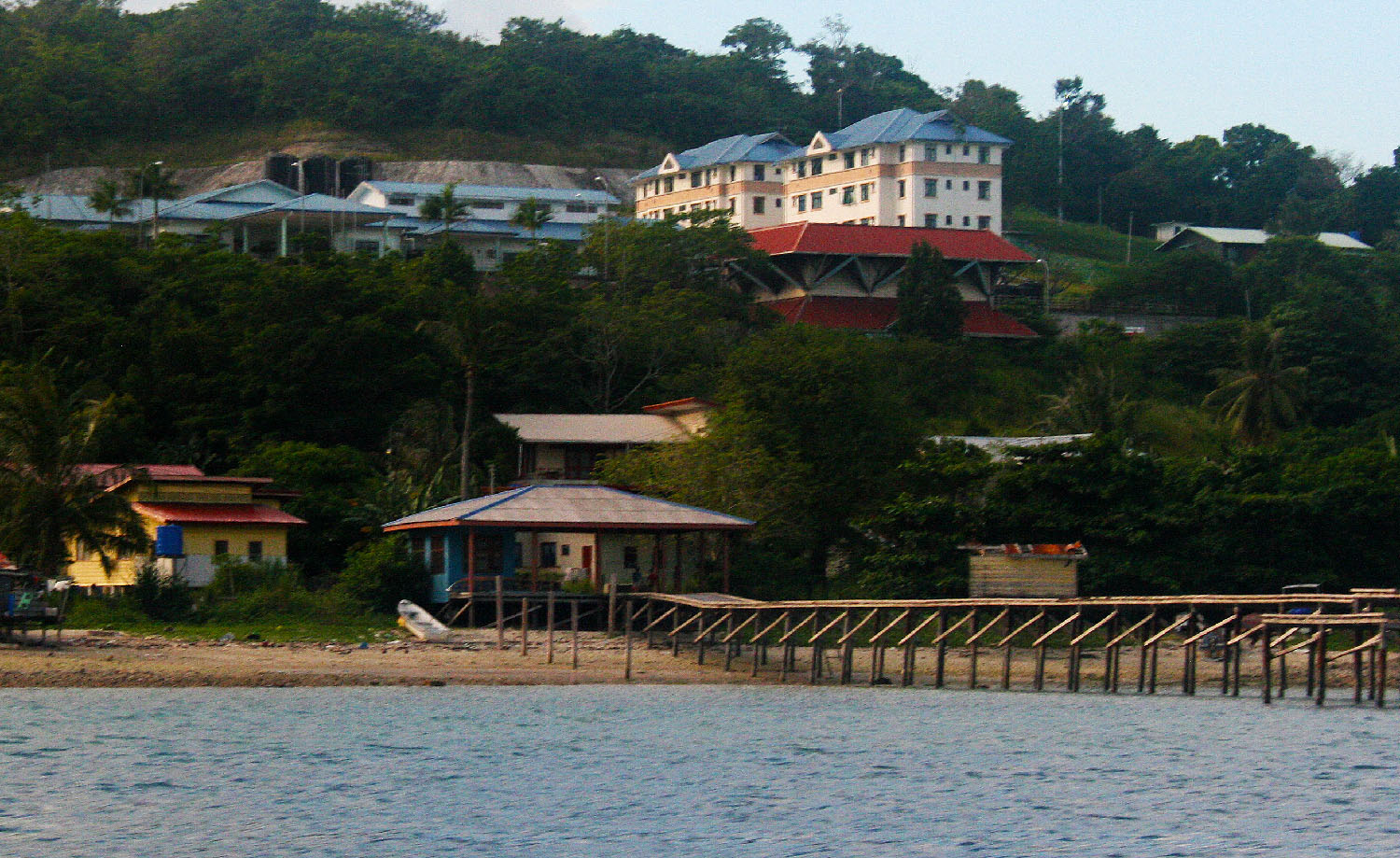I visited Pulau Banggi (Banggi Island) in year 2006, but this time I came back for different activities, which I will blog about soon. The weather had been bad for past few years, so I was so glad about the sunny days.
Click Here to see more photos of Pulau Banggi >>
Something have changed since my last visit. When approaching the jetty, you would see the tall blue and white government building on the hill, the lower blue building next to it is a new hospital. The jetty is also improved with proper walk-in entry, so you are no longer needed to jump from the boat to jetty.
Click Here to see more photos of Banggi Island >>
Bonggi Resort (photo below) still remains the only accommodation for tourists. The old wooden Bonggi-style guest houses are upgraded to stronger structure, but losing a bot of traditional taste. For air-conditioned room, it is about RM75 per night, while a double-bed room with fan is RM60. 3 years ago, the air-cond room cost RM50 per night. I stayed in the fan room and didn’t like it. There is no proper ventilation, so for the whole 2 night I was breathing the recycled warm air and couldn’t sleep well. I didn’t feel safe to be asked to leave my shoes outside the door, but my worry was proven needless.
Click Here to see more photos of Pulau Banggi >>
The thing that doesn’t change is — tons of rubbish along the shore. I can understand why Tourism ministry would never officially promote this place as a tourism spot. The garbage is such an eyesore the moment the tourists land on Pulau Banggi. FYI, there is a ferry from Kudat comes to Pulau Banggi(Karakit) twice a day.
Click Here to see more photos of Pulau Banggi >>
You could easily tell (hear) that Banggi Island is a Muslim area coz of the echoing loud speaker of the mosque during praying times. Muslims do not eat pork, so the wild boars live here happily and grow in large number. The stilt shop house near the jetty is still operating, but the toilet seems unstable. It would be a very amusing view to see the toilet and the user falls into the sea. The shops also dump rubbish and food leftover into the water. Obviously, it is too dirty to swim in it.
Click Here to see more photos of Banggi Island >>
Majority of the residents are still living in wooden houses and water villages. Tourism would help this place to develop. At the moment, there are less than 100 tourists come to this island very month. I went to this island with a group of 10 other people. We could see that the shopkeepers were so happy when we bought from their shops. But please improve the cleanliness first.
To know how to go to Banggi Island, you may check out my previous blog.
Related Post:
Banggi Island (year 2006)
Photos taken in Banggi Island, Sabah, Malaysia Borneo
